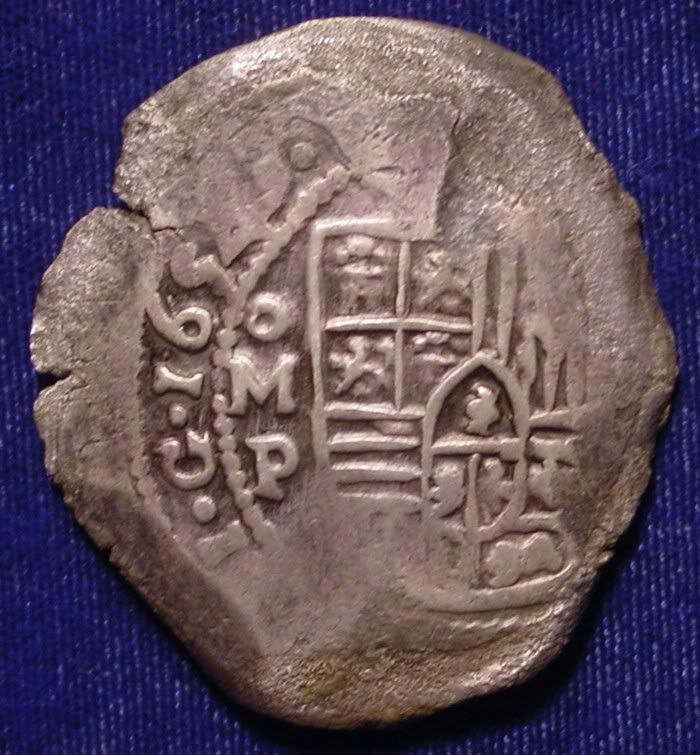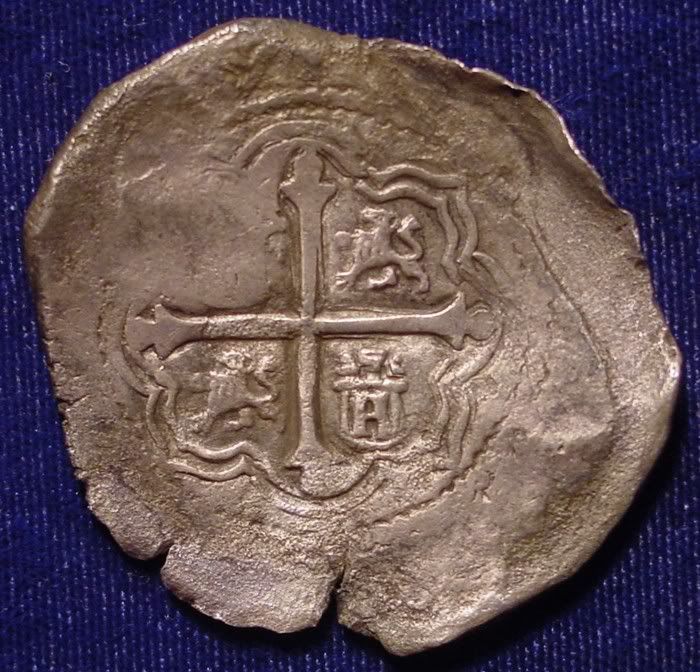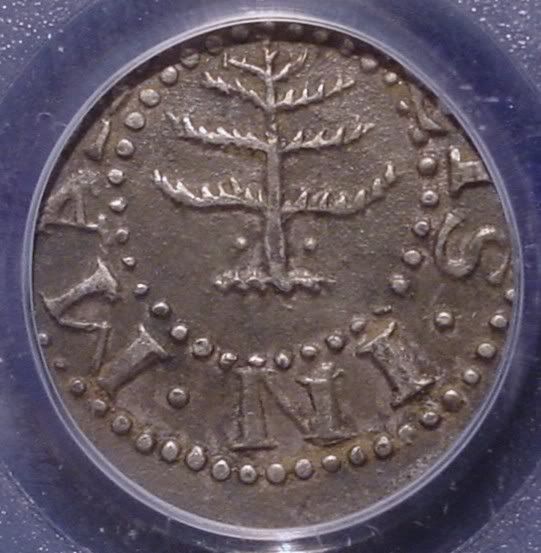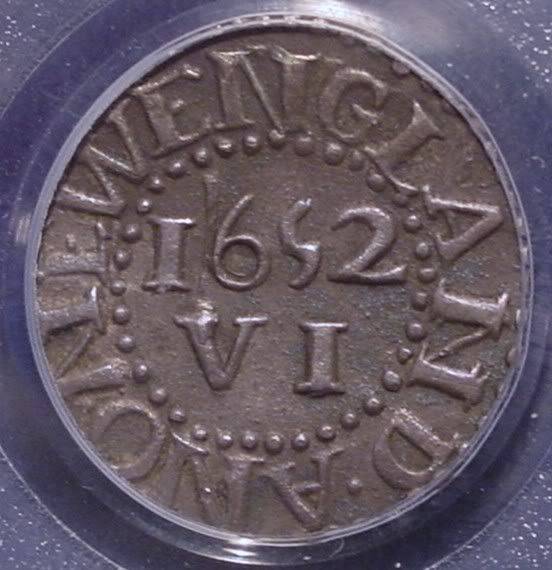The Cob ... An Ugly Coin with an Interesting History


It has taken me a long time, but I finally broke down and bought an 8 reale cob. These coins are positively crude and ugly, but they played a major role in the economic development of the world from the late 1500s until the mid 1700s. These pieces truly were a world currency, and our ancestors who settled in early colonial America were very familiar with them.
The cobs were products of the Spanish Empire in the Americas. The Spanish established mints in Bolivia, Columbia, Guatemala, Mexico and Peru. After striking these coins they were often shipped to Spain, but the coins were also taken to other ports around the world. For example this piece, which was struck in Mexico City in 1654, was recovered from a shipwreck off the coast of Australia.
The most often cited story for name “cob” has to do with a Spanish phrase, “cabo de barra” which means “end of the bar.” One of the more common methods of making the planchets for these pieces was to slice off the end of gold or silver bar, also known as a “Spanish finger.” Then the planchet was struck with a set of dies and a hammer. The planchets were never perfect, except for special strikings called “royals.” Every cob was different and almost none of them had all the design elements showing that were on the dies. This piece is unusual in that it has a readable date.
According to the dealer from whom I bought this piece, this cob was not struck “an end of the bar.” Instead a quantity of molten silver was poured out on a flat surface. After it cooled the mass of silver was cut into pieces with a hammer and chisel and then struck to produce the coin.
One other role that cobs played in American numismatics was that they were the major source for the silver that was used to strike the Massachusetts silver coins, which is often called the “pine tree shillings.” Records from Massachusetts mint master, John Hall’s account books show that Spanish cobs were most often melted and coined into products from his mint.


At the recent FUN show I added this Massachusetts Pine Tree six pence to my collection. This is a Noe 33 which is the most common six pence variety. The obverse of almost all of the known examples of this coin is struck off-center. This is an unusually nice six pence, which PCGS graded as an AU-55.
Retired dealer and avid collector of U.S. type coins, 19th century presidential campaign medalets and selected medals. In recent years I have been working on a set of British coins - at least one coin from each king or queen who issued pieces that are collectible. I am also collecting at least one coin for each Roman emperor from Julius Caesar to ... ?
0
Comments
Interesting story, Bill. Thanks for sharing this.
~
"America suffers today from too much pluribus and not enough unum.".....Arthur Schlesinger Jr.
I have a 2-reale cob - I shared it here once before, where forum experts informed me it was made in Bolivia in 1742 -
>>>My Collection
The Bolivian 2 Real is a great coin, too. Nice centering, strong strike, a fairly good amount of detail. It shows more substantial even wear testifying as to its heavy use in 18th century Americas. I wonder what some of the more interesting things that it might have purchased.
<< <i>Great Story! I wonder if I could convince DCarr to produce Pine Tree Shillings out of 8 Reale Cobs?
These just out:
Moonlight Mint Treasure Cobs
<< <i>According to the dealer from whom I bought this piece, this cob was not struck “an end of the bar.” Instead a quantity of molten silver was poured out on a flat surface. After it cooled the mass of silver was cut into pieces with a hammer and chisel and then struck to produce the coin.
>>
I agree that your cob was not struck on a piece cut from a bar. But I disagree that the planchet for your cob was chiseled from a larger piece. I believe that individual molten (then cooled) blobs of silver were hammered relatively flat and then struck. But these were poured as individual blobs, not one big blob cut apart with a chisel. I do see one major hammer "facet" on your cob (lower left edge in left picture). The cracking around much of the perimeter is consistent with a strike on an individual blob of silver. I say that because I recently struck some cobs on individually-poured blobs, and that was the same effect I observed (note the cracking of the upper left cob rim from 12:00 to 3:00):
PS:
I don't think cobs are "ugly" at all.
Did you strike them with a press or a hammer of some sort ?
<< <i>Super cool coin Dcarr !
Did you strike them with a press or a hammer of some sort ? >>
Thanks, I used my coin press to strike them. They are relatively large (~28 grams each), and the blobs weren't flattened with a hammer before being struck. Had they been smaller in diameter (less surface area) and flatter, I might have been able to strike them with a hammer.
<< <i>
<< <i>According to the dealer from whom I bought this piece, this cob was not struck “an end of the bar.” Instead a quantity of molten silver was poured out on a flat surface. After it cooled the mass of silver was cut into pieces with a hammer and chisel and then struck to produce the coin.
>>
I agree that your cob was not struck on a piece cut from a bar. But I disagree that the planchet for your cob was chiseled from a larger piece. I believe that individual molten (then cooled) blobs of silver were hammered relatively flat and then struck. But these were poured as individual blobs, not one big blob cut apart with a chisel. I do see one major hammer "facet" on your cob (lower left edge in left picture). The cracking around much of the perimeter is consistent with a strike on an individual blob of silver. I say that because I recently struck some cobs on individually-poured blobs, and that was the same effect I observed (note the cracking of the upper left cob rim from 12:00 to 3:00):
PS:
I don't think cobs aren't "ugly" at all. >>
I agree with this but all I have to play with is my daughter's playdough. Same cracking at the edges though.
SP picture
Great transactions with oih82w8, JasonGaming, Moose1913.
Fellas, leave the tight pants to the ladies. If I can count the coins in your pockets you better use them to call a tailor. Stay thirsty my friends......
<< <i>I'm glad this 3+ year old post got revived………………..MJ >>
I agree. I didn't see it the first time. Fascinating stuff. And the Carr pieces are spectacular.
<< <i>Mine looks cut but I really have no idea, maybe a blob that was trimmed for weight
That one does look cut. By the shape of it, it appears that it was cut after being struck (for weight adjustment).
<< <i>
<< <i>According to the dealer from whom I bought this piece, this cob was not struck “an end of the bar.” Instead a quantity of molten silver was poured out on a flat surface. After it cooled the mass of silver was cut into pieces with a hammer and chisel and then struck to produce the coin.
>>
I agree that your cob was not struck on a piece cut from a bar. But I disagree that the planchet for your cob was chiseled from a larger piece. I believe that individual molten (then cooled) blobs of silver were hammered relatively flat and then struck. But these were poured as individual blobs, not one big blob cut apart with a chisel. I do see one major hammer "facet" on your cob (lower left edge in left picture). The cracking around much of the perimeter is consistent with a strike on an individual blob of silver. I say that because I recently struck some cobs on individually-poured blobs, and that was the same effect I observed (note the cracking of the upper left cob rim from 12:00 to 3:00). >>
Note that where the hammer facet is, there is no cracking.
A few hours ago, I performed an interesting experiment. I picked out two silver blobs, nearly identical in shape and weight. I struck one and there were numerous small cracks around the edges. I took the second blank cob and hammered it all around the edges to make some irregular "facets". Then I struck it the same as the first one - no cracks ! I believe that some makers of the original cobs figured out the hammering trick as a way to prevent cracking. Of course, with many different people making them, in disparate locations, over a span of many years, there will be inconsistencies. But it appears that cobs with hammer facets are generally not cracked where the facets are.
<< <i>
<< <i>
<< <i>According to the dealer from whom I bought this piece, this cob was not struck “an end of the bar.” Instead a quantity of molten silver was poured out on a flat surface. After it cooled the mass of silver was cut into pieces with a hammer and chisel and then struck to produce the coin.
>>
I agree that your cob was not struck on a piece cut from a bar. But I disagree that the planchet for your cob was chiseled from a larger piece. I believe that individual molten (then cooled) blobs of silver were hammered relatively flat and then struck. But these were poured as individual blobs, not one big blob cut apart with a chisel. I do see one major hammer "facet" on your cob (lower left edge in left picture). The cracking around much of the perimeter is consistent with a strike on an individual blob of silver. I say that because I recently struck some cobs on individually-poured blobs, and that was the same effect I observed (note the cracking of the upper left cob rim from 12:00 to 3:00). >>
Note that where the hammer facet is, there is no cracking.
A few hours ago, I performed an interesting experiment. I picked out two silver blobs, nearly identical in shape and weight. I struck one and there were numerous small cracks around the edges. I took the second blank cob and hammered it all around the edges to make some irregular "facets". Then I struck it the same as the first one - no cracks ! I believe that some makers of the original cobs figured out the hammering trick as a way to prevent cracking. Of course, with many different people making them, in disparate locations, over a span of many years, there will be inconsistencies. But it appears that cobs with hammer facets are generally not cracked where the facets are. >>
A crude method of upsetting the blanks, perhaps?
<< <i>A crude method of upsetting the blanks, perhaps? >>
Sort of the opposite. The edge is made thinner by the hammering, and the metal around the edge is also work-hardened some.
The more qualities observed in a coin, the more desirable that coin becomes!
My Jefferson Nickel Collection